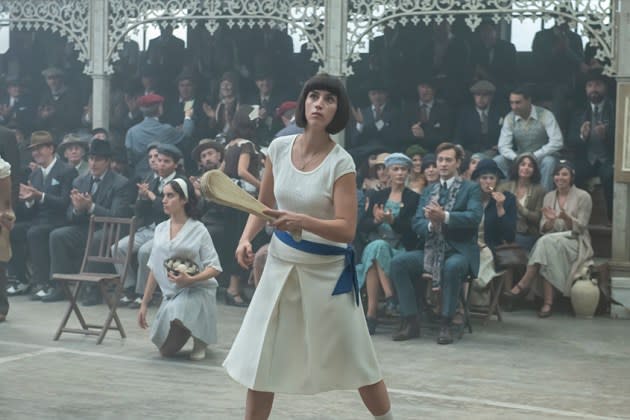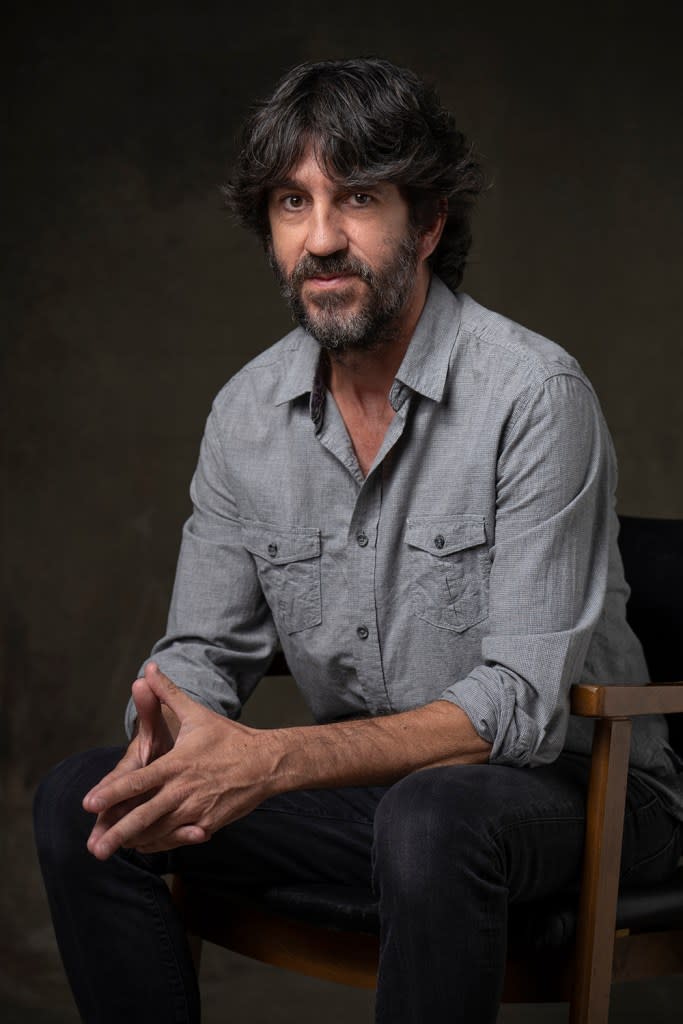ViX, Mediapro Studio Banner Series ‘Las Pelotaris, 1926’: Women Pioneers In a Very Modern Gender Struggle

The world’s TV scene faces challenges. But it still has opportunities. Marc Cistaré, a writer on “Locked Up,” has seized one, the strategic co-production alliance between TelevisaUnivision’s ViX streaming service and The Mediapro Studio.
Rolling off the hiked ambitions of Spain’s TV scene after streamer success, he has created“Las Pelotaris, 1926,” which The Mediapro Studio Distribution is bringing onto the market at this week’s MipTV.
More from Variety
A ViX Original, airing from March 10 on its platform as part of its premium offer, the show combines the craft learnt from two decades of writing Spanish prime-time series and the larger canvas, gender focus and artistic boldness of contemporary scripted.
Sold outside Latin America and the U.S. by The Mediapro Studio Distribution, which these days means a lot in terms of profile at Cannes TV markets, the series weighs in as one of the market’s big Spanish-language bets and one of the only big Latin American plays at the MipTV.
Created by Cistaré, and co-written with Spain’s Adriana Rivas (“Locked Up”) and Javier Naya (“The Boat”) and Mexico’s Anaí López (“Ana”), “Las Pelotaris, 1926” is directed by Jesús Rodrigo (“Locked Up”) and Jacob Santana (“Paco’s Men”). Set between Spain’s Basque Country and Mexico, it kicks off with a black-and-white prologue in the Basque Country in 1915 as a voiceover explains that back then kids didn’t have video games nor social media but they did have walls, and played pelota.
As a band of young girls challenge boys to use a local wall, the series explodes into color, electric guitar rock-music and a split screen cutting to 1923 as now young women are playing pelota for a living.
That’s no easy call. “Las Pelotaris, 1926” pays tribute to three fictional figures who are pioneers in not only the sport but also a gender-struggle still being fought a century later. By the end of Ep. 2, one player, Mexican champion Chelo (Zuria Vega, “El Refugio”), pregnant, has had to feign an abortion to be allowed to contest the final of Mexico’s championships. Another, Itzi (Maria de Nati, “Wrong Side of the Tracks”), has been blacklisted from playing by her father, a pelotari team manager, given her homosexuality.
A third, Idoia (Claudia Salas, La Rebe in “Elite”), the Spanish champion, looks like she could fall into the maws of the local mafia after struggling as a woman to raise the money to build a pelota court.
A tale of love, revenge and betrayal, “Las Pelotaris, 1926” could well be called “Las Pelotaris, 2023.” Variety talked to Cistaré in the run-up to MipTV.
The story might be set in 1926, but is thoroughly modern in terms of its gender struggle, which is still being fought a century later. Could you comment?
When we began to write, we talked to women pelota players who came after the pioneers, but knew the players from the 1920s. What was so heartrending was that many of their stories, their conflicts, were totally contemporary. We’ve maybe made 10% of the progress needed.
Hence the series’ modern style….
It was what the series called for. Maybe it’s a question of personal taste but I wanted to avoid the sense of distance I feel in much period drama. I wanted to bring the conflicts, which are so contemporary, as close as I could to the spectator, with the way the characters move, talk, dress – their sun glasses, for instance – to give the sense that this happened 100 years ago, and is happening today.

The series straddles Mexico and Spain but in its depiction of the world of 1920’s pelota, still has one attraction audiences often crave: the sense of the unknown….
This is a fiction series but inspired by a context which existed. But what caught my attention was that it hasn’t really gone down in history, perhaps because these are women who were sometimes successful, had money and did things which women weren’t supposed to do, so Franco’s regime in Spain wasn’t interested in highlighting them. All the better for me.
“La Pelotaris, 1926” is high-end, shot totally on location. There’s a sense of production ambition….
Yes, even the interior scenes are natural interiors. I come from a school, “Locked Up,” in which I took part, which marked a before and after for Spanish production in terms of its worldwide recognition, even with versions of the series in other markets, and we also have other examples such as “Money Heist.” These series have contributed to raise production levels in Spain, and what is expected of Spanish series. One of my merits has been to choose the best, people better than me: Director Jesús Rodrigo, for example, who helmed “Locked Up,” or art director, Fernando González, a production designer on “Locked Up” and “Money Heist.” I’m a screenwriter and it’s difficult to see a series which is better than what you thought it would be. That happened with “Las Pelotaris, 1926.”

There’s also a sense that series need not only higher production levels but also larger artistic ambition…..
When we’ve been able to make series which have gained more recognition, it encourages you to be more ambitious, deeper. Spanish series are now prestigious, when 80% of their creators are the same as before. In Spain we don’t value what we have until it’s valued from abroad….
That said, with “Las Pelotaris, 1926,” I didn’t see out to write a social-issue or feminist series. I found a feminist series which came to me by chance and which had a tremendous dramatic potential.
One of the hallmarks of Spanish scripted since its lift off in the mid-1990s has been its genre-blending. Some of the most successful of Latin American series have practiced the same – “Who Killed Sara?” is melodrama wrapped in a thriller, for example. Could you comment?
There are moments of melodrama, I think, but also comedy – my series will always have some comedy – and novela romance. I’d like to think that to make a broad-audience premium series, you have to practice an alchemy of genres, and ViX understood and supported that decision. But you can’t let one genre settle. When that seems to be happening, you change tone. For me it’s organic. Life is like that. It might be a legacy of Spanish ser¡es which in the past had to last 70 minutes but it happens in many series. “Better Call Saul,” which I love, is multi-toned. It’s far more contemporary than it might seem.
Best of Variety
Sign up for Variety’s Newsletter. For the latest news, follow us on Facebook, Twitter, and Instagram.

